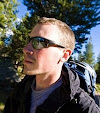About every 100,000 years, for much of the last million years, huge glaciers called ice sheets have expanded to cover much of northern North America. About 26,000 years ago, the most recent of these glaciers, called the Laurentide Ice Sheet flowed southward through the Lake Superior and Lake Michigan regions and into Wisconsin. Although glaciers have probably covered this park several times, geologists recognize evidence here for only the most recent glaciation, the Wisconsin Glaciation. By about 10,000 years ago the ice sheet had melted back to the Lake Superior area.
The terminal moraine at Pope Farm Park, just west of Madison - was formed as the glacier stalled, and built up this ridge in a conveyor-like method - transporting boulders and gravel to this location before slowly melting away towards Canada.
